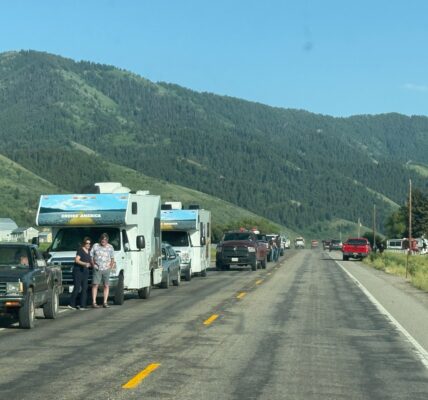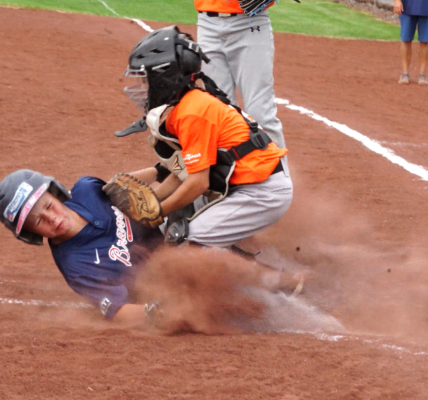By Mike Koshmrl
Jackson Hole News&Guide
Via- Wyoming News Exchange
JACKSON – Rangers have decided to pull volunteer hunters out of the Tetons early and cease the cull of exotic mountain goats for now.
Volunteers killed 43 goats during a six-week effort. Grand Teton National Park Chief Ranger Michael Nash opted to wrap up the operation a couple weeks earlier than planned based on potentially hazardous conditions in the mountains.
“With the snow volume, I made the recommendation to … not continue,” Nash told the News&Guide. “The snow’s not going to go away, at this point.”
Participants’ safety was his chief concern.
In 2020 the National Park Service made significant strides toward achieving its goal of eradicating all the mountain goats that live in Teton park.
Some 79 were killed via park operations this calendar year, which means the majority of an estimated 100 goats living in the range have been removed. In the spring, however, the goats would have reproduced — and so it’s very likely there are more than just 20 goats remaining.
The purpose of the eradication effort is to safeguard the survival of a small and isolated native herd of bighorn sheep in the Tetons. Nonnative goats, which trace to a transplanted herd in the Snake River Range, are thought to threaten the sheep through competition for food and disease.
Months before vetted and tested citizen hunters took to the mountains, a helicopter gunner was contracted. The aerial operation went smoothly, killing 36 goats in half a day, but backfired politically. Interior Secretary David Bernhardt stepped in to stop the program the day it got off the ground.
Contracting with an aerial gunner drew bitter reaction from some hunters.
During the Wyoming Game and Fish Commission’s meeting in April, one person even asked if park biologists would be charged for a crime. They would not, Wyoming Game and Fish Director Brian Nesvik responded.
“As far as any type of action to arrest National Park Service employees who were involved in the aerial gunning of those mountain goats,” Nesvik told the man, “while we and the commission certainly vehemently oppose the action that they took … we certainly don’t see that there’s legal justification or the authority for the department or the state to arrest employees of the federal government.”
For years Game and Fish Commissioner Mike Schmid had been the loudest voice in the room opposed to using hired gunners years before Secretary Bernhardt, President Donald Trump’s appointee, intervened. The La Barge resident and oil and gas industry businessman advocated letting the pubic have a shot at hunting the goats first, even though hunting is ordinarily prohibited in national parks.
At a public meeting at the Wort Hotel in 2018, Schmid said: “I would hope the agencies can come together to come to some kind of a solution because the goals are the same.”
Schmid’s push against using helicopters worked to some extent.
The Wyoming Game and Fish Department echoed his request and the Park Service altered its decision, authorizing use of “qualified volunteers” to kill goats on the ground instead. But Plan A remained shooting them from helicopters, a method that prevailed until the airships were called down by Bernhardt.
Fast-forward to the middle of October, and Schmid was camped out on the shore of Jackson Lake goat hunting with his brother, son-in-law, son-in-law’s father and a friend. The party was picked by the National Park Service to participate in the cull and instructed to kill as many goats as possible in and around Moran Canyon and surrounding mountains like Eagles Rest and Bivouac peaks.
It was a choice spot, judging from the boat ride across Jackson Lake in to a backcountry camping spot along the lakeshore that Teton Park authorized.
“We spotted 12 goats right from the boat,” Schmid said.
Over the next five days the five-person team hiked, scrambled and busted through willows on their way to killing seven mountain goats — the highest kill count of all the teams that participated. Two of those goats fell in areas where they couldn’t be recovered, but the meat from five others was packed out of the Tetons.
The going was grueling, Schmid recalled.
“In the bottoms working up toward the peaks it was so brushy that I think half the time we weren’t even on the ground,” he said. “We were walking up on top of branches that we pushed our way through to get up to the goats. It was a physically demanding hunt, probably the most physically demanding I have been on.”
Not every volunteer hunter shared such success. Through five weeks of the six-week operation, 90 hunters put in a combined 4,523 hours in pursuit of the Tetons’ mountain goats, Nash said. Many teams saw goats but could not get to them and walked away empty-handed. The helicopter operation, in contrast, lasted just four hours and killed nearly as many goats.
Schmid has changed his stance on whether the park should finish its goat eradication plans using the more efficient method. He praised the ground-based citizen cull and dubbed it a success.
“We were all very surprised at how well the Park Service laid it out,” Schmid said. “They’ve done what the public asked, and they gave us the opportunity.
“If eradication as quick as possible is the endgame — which I believe it is — I fully expect them to go back in and clean the rest of them up with aerial gunners,” he said. “If that’s the choice, I would support that.”






